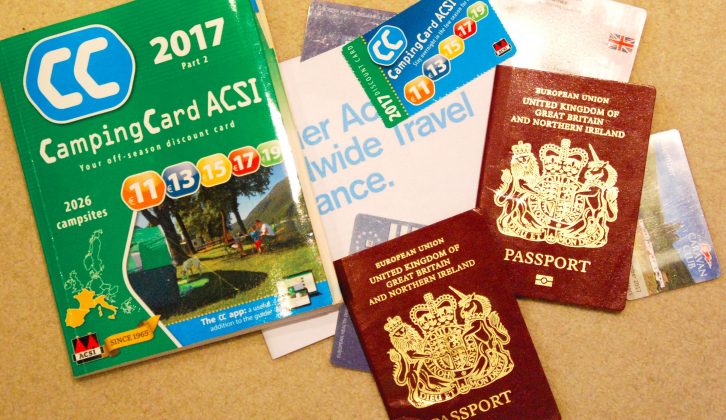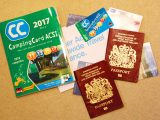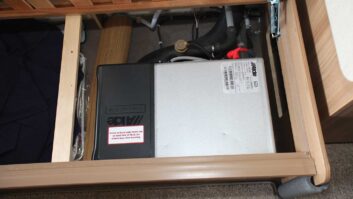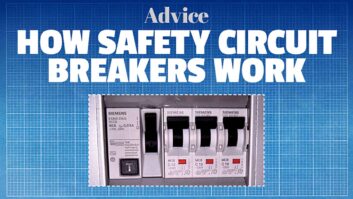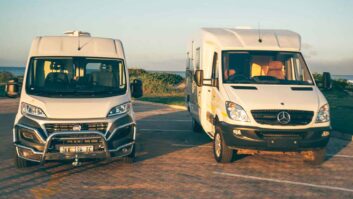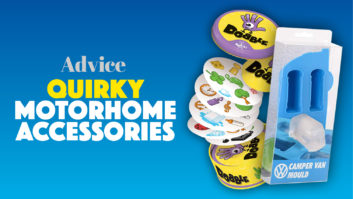We are a few weeks away from a two-month trip to the Continent in our Ace Siena motorhome, Elsa.
The excitement is building and serious preparations have started.
The decisions on the crossing date and route have just about been reached, but there is plenty to remember to do before locking up and heading for Dover.
Whether you’re a seasoned motorcaravanner or you’re planning for your first overseas tour, read on for some top tips, so nothing is forgotten, you can relax and have fun – and happy holidays!
The motorhome
A V5C registration document and current insurance and MoT certificates are essential for visiting EU countries and beyond.
Make sure your insurance won’t expire while you are away, and that it covers you for the countries you may visit.
For instance, the 20km of Bosnia and Herzegovina on the coast road to Dubrovnik are not covered by some policies, and a diversion may be required.
Check that your breakdown cover is similarly valid.
The requirements for each country are listed in the Caravan and Motorhome Club book of European sites, which has comprehensive information on documents, speed limits and currency for the countries covered – as has the ACSI sites book, plus the websites of the RAC and AA.
You are well advised to look at the details for each country before entering.
Some countries, such as Switzerland, Austria and Slovenia, require a current vignette on the windscreen for motorway driving and some tunnels. These can be bought at the border.
There is also a new French pollution control measure requiring a Crit’Air vignette, showing the emissions level from your vehicle.
Currently it is only relevant to Paris, Grenoble and Lyon. It is available online for €4.18 plus a photo of the vehicle’s V5C.
The fine for driving in these cities without a vignette is €68 for a car, and more for larger vehicles.
Be sure to turn off any speed-trap detector option on your sat-nav because this is illegal in many countries.
Various other items are also required, such as two breathalysers for France, and spare glasses plus two warning triangles in Spain.
Personal belongings
Print off your ferry/tunnel booking receipt or e-ticket to produce when you arrive at the port/station.
Check all the usual documents well in advance to give you time to update them, in particular passports (keep a photocopy in a safe place) and EHICs (European Health Insurance Card).
There is no need to pay for a new EHIC: it can be done for free through the NHS website.
Travel insurance is advised as well as the EHIC, because the latter will not cover repatriation should you need it – check the time limits you can be away, and you should also advise of any existing medical conditions.
ACSI or CCI membership cards can avoid you having to leave your passport at reception on a site.
The photocard driving licence is generally accepted in the EU and Switzerland, but a green card may be required.
Your bank might stop account withdrawals if you do not tell them where you are going. Take more than one credit or debit card, and keep them separate.
Medications need to be ordered up front if you’re away for over a month.
Pets on tour
A government website gives all the necessary information regarding microchips, vaccinations and passports.
Your vet will give you more details regarding prevention of other diseases, as well as checking that your pet’s microchip is working.
Look at his or her insurance for foreign cover. You will need to consider carefully your cross-Channel route, and ensure the carrier knows you have a pet with you.
A visit to a vet is required for tapeworm treatment between one and five days prior to re-entering the UK.
Don’t forget home!
Ensure that your household contents and buildings insurance covers you for the duration of your trip, and that you are not exceeding the maximum number of days away per annum.
Insurers may also require that someone looks in on the property on a regular basis, that the water is turned off, and that background heating is on in the winter months.
When leaving home, make sure it is secure and safe.
Try to avoid leaving it looking as if it is empty: get the post moved daily or redirected, and leave a light on a timer.
It is inadvisable to post photos or information online indicating that you are on holiday.
Some insurance firms may not settle a claim if this is the case, because you have advertised the fact that the property is empty.
When we sit down in the ’van before leaving home, we check that we have in our hands the absolute essentials, as mentioned above – knowing that anything else can be bought!
Hints for drivers
I have been driving on the Continent for more than 40 years in cars, towing a caravan and in our motorhome.
This by no means makes me an expert, but the following may give a few hints for those starting out.
- Behind the wheel
A comfortable driving position is essential on a long journey.
I adjust the seat until my right foot is relaxed on the accelerator at around my cruising speed.
Ensure that your left foot is relaxed on the floor, not on the clutch pedal.
Adjust the steering wheel to where it is comfortable with your hands at ten-to-two and you can see the speedometer.
Any muscle tension will contribute to fatigue and stiffness. A small adjustment to the angle of the seatback will help if stiffness is setting in.
- Navigation
I like to check the sat-nav against a map before setting off to see that we will be following a sensible route for a motorhome.
The sat-nav is secondary to the navigator on your left reading the map. We find a European map is best for longer journeys, covering a larger area per page.
- Driving time
Set yourself a reasonable distance for the day’s drive and make contingency plans for any delays.
We always book the ferry for first thing in the morning, so plan to get to within an hour of the port the evening before.
Getting there is far more important than breaking records. Stop every two hours and take a walk. Eat and drink properly.
The lanes into toll booths are narrow and can have height barriers.
Apart from a few near Calais, they’re set up for payment through the left-side window.
This will mean hopping about if you are alone. Have a set place for the ticket to avoid holding up the queue while hunting for it.
- Speed
Drive at a pace that’s comfortable for you, but be aware that it may not be fast enough for those behind.
Pull in at intervals and let them past, but ensure that you have good visibility for your entry back onto the carriageway.
Driving at ‘lorry’ speed avoids having to overtake as often, and also gives the optimum mpg.
In your first few miles, get an idea of where the blind spot is: on an autoroute, overtaking is easier on a left-hand curve because your visibility is better.
Finally, after driving for a few weeks on the right, take care on your return to the left in the UK!
Here’s your essential checklist
Personal documents:
- Passports – keep photocopies in a separate safe place
- Travel insurance – check phone numbers from abroad, inform insurer of any medical conditions
- EHIC (formerly E111)
- Driving licences, for all who can drive
- Green card – check if it is required in countries you might visit
- Credit cards – inform your bank of the countries you’re visiting
- ACSI card – note advance bookings (also CCI card)
- Medication
- Euros – for the first day’s tolls
- Tickets/print-outs of ferry and campsite bookings
Vehicle:
- V5C registration certificate
- MoT certificate
- Insurance certificate – check company’s phone numbers from abroad
- European accident form – if you take an umbrella, it won’t rain!
- Breakdown cover, including phone numbers from abroad
- Breathalysers (France), available on the ferry
- A GB sticker, if not on your numberplate
- A warning triangle, available on the ferry – two are required in Spain
- Beam deflectors are also available on the ferry – fit them even if you are not driving in the dark
- A first-aid kit – available on the ferry, if required
- High-vis vests for all in the vehicle – they should be easily accessible in the cab
- Spare glasses
- A spare-bulb kit
- Vignettes (as required)
- Gas Calor – gas is not usually available outside the UK
- Spare vehicle keys – do not leave in the unattended vehicle!
- A square warning board, for a rear protruding load/bikes
- Maps, books of campsite listings, sat-nav unit (and power cable!)
- Turn off the radar speed-trap warning on the sat-nav
Before you leave home
- Check your household insurance covers the time your property is unoccupied
- Inform your contents/building insurers that the property is unoccupied
- Turn off the water and relevant electrical appliances
- Central heating – turn it off (or leave it on low in winter to avoid freezing pipes)
- Give a key to a neighbour to check the property and move post out of sight
- Stop milk/papers
- Lock windows, set an alarm, lock up and go!
Getting there is far more important than breaking records
